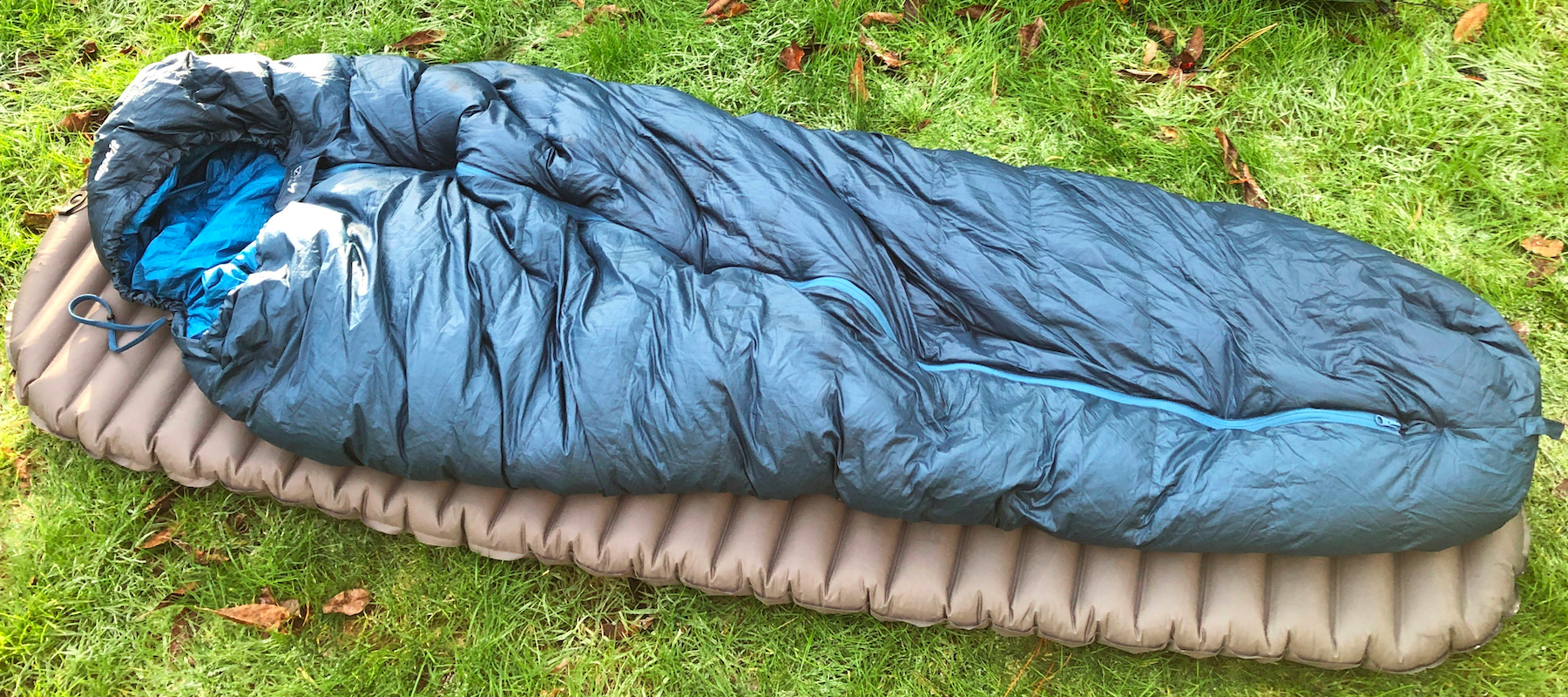Advnture Verdict
The Alpkit Pipedream 400 down sleeping bag is a comfortable and cozy cocoon that will keep you warm from early fall through to early winter and beyond. It’s light carry weight and compressible size make is excellent for multi-day trail trips by foot and pedal.
Pros
- +
Light
- +
Highly compressible
- +
Warm
- +
Excellent price
- +
100% RDS-certified hydrophobic down
- +
DWR-treated outer
- +
Choice of left or right zip
Cons
- -
The regular size is a bit small
- -
No women’s specific version
- -
Performance drops if it gets wet
- -
Not suitable for vegans
You can trust Advnture
Alpkit Pipedream 400: first impressions
The Alpkit Pipedream 400 truly delivers on warmth across three seasons (and beyond, if used in conjunction with the right sleeping pad and a good tent), while remaining super lightweight and amazingly compressible. All of which makes it one of the best three-season sleeping bags for multi-day backpacking and bikepacking escapades.
• List price: £219.99 (UK)
• Style: Lightweight, box-wall, three-season down sleeping bag
• Shape: Mummy
• Weight: 865g / 1lb 14.5oz
• Length: Regular: 190cm / 75in; Long: 210cm / 82.5in
• Pack size (compressed): Regular: 19cm x 14cm / 7.5in x 5.5in; Long: 21cm x 15cm / 8in x 6in
• Filling: 750 fill power DownTek hydrophobic down
• Fill weight: 400g
• Temperature limits: -4.2°C / 24.4°F; (Alpkit limit): -6°C / 21.2°F
• Zip options: Left / right
• Colors: Blue / Dark Blue
• Compatibility: Three-season camping
As with all products made by British brand Alpkit, the Pipedream 400 has been designed, developed and tested by true outdoor enthusiasts. As a result, it has all the features most people are looking for in a sleeping bag intended for wild adventures, and it represents excellent value for money.
Being mummy-shaped, the Alpkit Pipedream 400 is narrower at the bottom than it is at the head end, which reduces the internal size of the bag, maximizing its thermal performance (because there is less empty air for your body to heat up and keep warm). It has a comfort rating that goes down to -4.2°C, and Alpkit’s self-set limit rating extends to -6°C (the EN 13537 European standard rating for this bag actually goes right down -10.8°C).
The horizontal box-wall baffle construction of the Pipedream prevents the down fill from clumping up, instead pinning it in place and keeping it strategically distributed around the bag, where you need it to stay warm and comfortable. This design cuts out the scourge of cold spots.
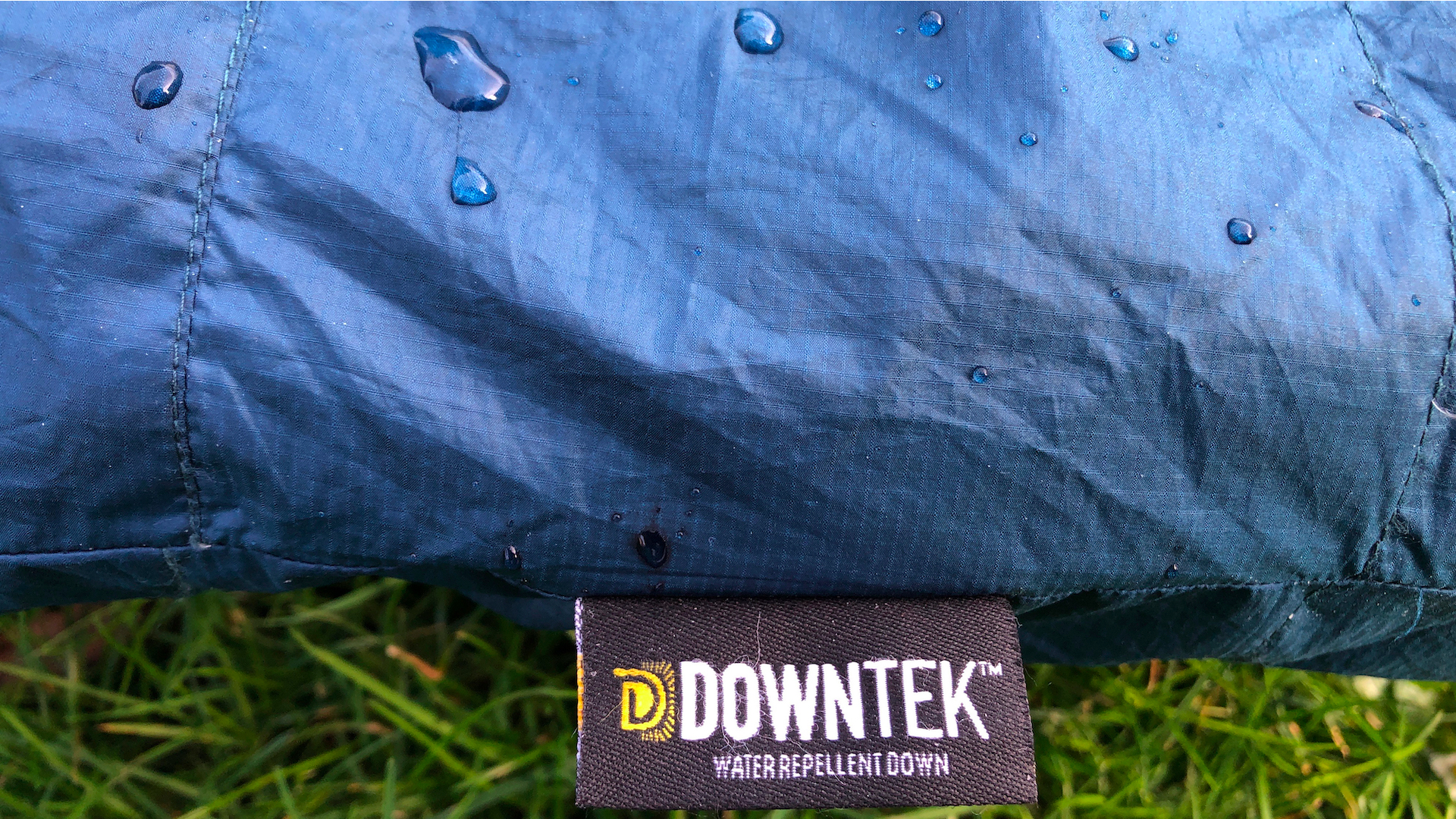
The high thermal performance of the sleeping bag is supplied by 750 fill power DownTek hydrophobic gray goose down (a by-product of the meat industry, 100% RDS-certified and audited by a third party), with a hydrophobic treatment to help preserve its lofting properties and prevent clumping if it gets wet. The 20D polyester, PFC-free outer material has a Durable Water Repellent (DWR) treatment too, and the combination of these measures mean the Alpkit Pipedream 400 can still work in damp conditions (albeit not as well as a synthetic bag, so it’s important to protect this product from exposure to water as much as possible).
The Pipedream 400 is available in a regular or a large size, and you can also opt to have the zip on the left or right side (as determined by the zip’s position when you’re lying on your back with the hood correctly positioned). Alpkit label their bags “right-hand” (which will have the zip on the left) and “left-hand’”(which will have the zip on the right) because right-handers find it easier to operate a left-located zip, and visa versa for left-handed people. There is a full-length baffle that helps stop the material getting caught in the zip.
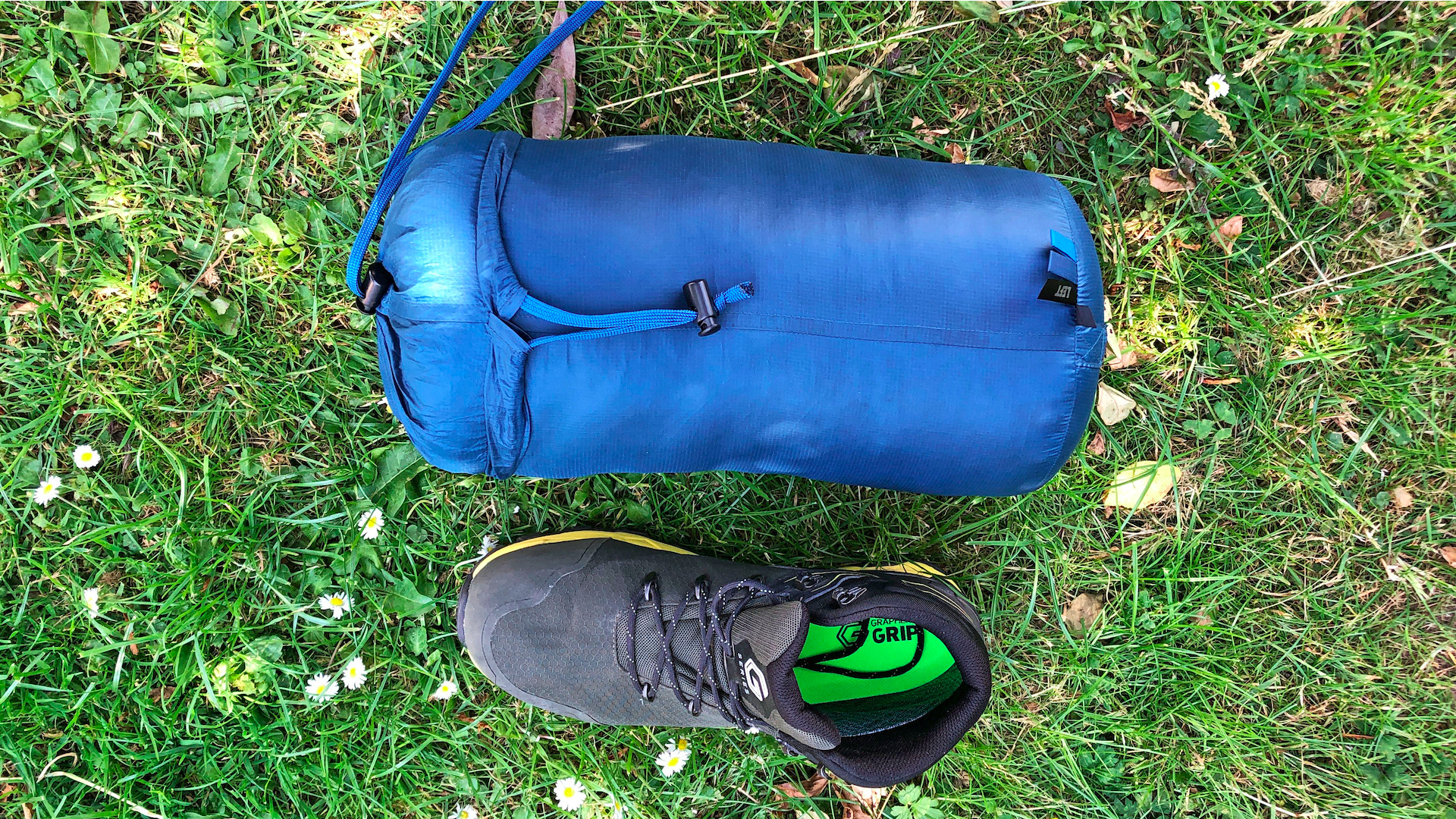
The stuff sack has a double compression system, with two toggles, so you can squish it right down to a tiny package measuring just 19cm x 14cm (for the regular, the long version measures 21cm x 15cm when fully compressed).
All the latest inspiration, tips and guides to help you plan your next Advnture!
The Alpkit Pipedream 400 is covered by Alpkit’s three-year Alpine Bond, and the Peak District–based brand also operate repair stations where they will fix not just their own products, but also gear made by others.
So far, so excellent – but does the Pipedream 400 perform well enough out in the wild to earn a place in our round up of the very best sleeping bags on the market at the moment? I’ve been using it in a range of conditions to find out.
Alpkit Pipedream 400: in the field
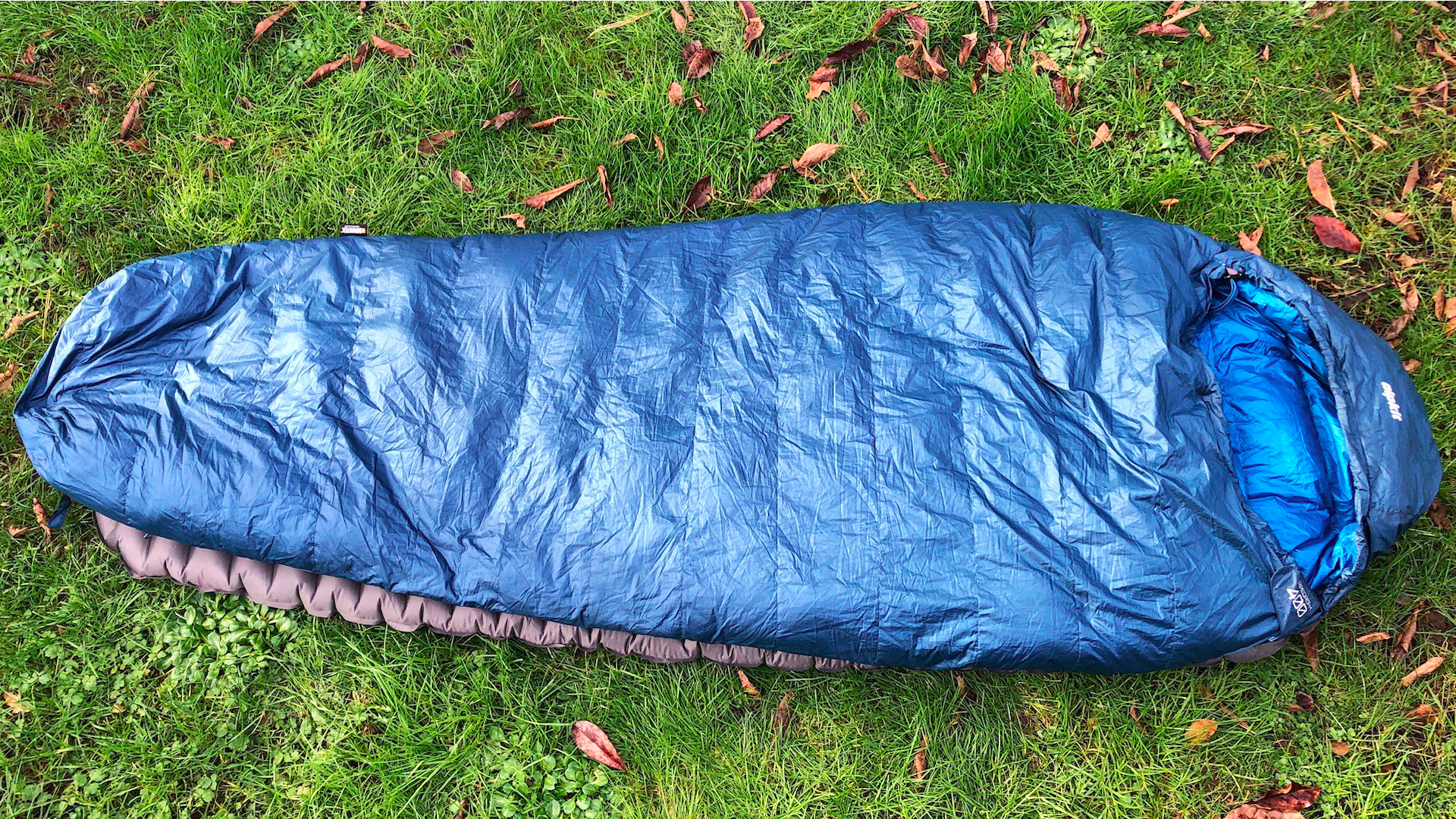
Across the last nine months I have been putting the Alpkit Pipedream 400 sleeping bag to the test in all sorts of scenarios, from a four-day fastpacking trip along the West Highland Way in the north of Scotland in late fall, through to midwinter garden sleepouts and several spring and early summer escapades in the South West of England.
Every night I have spent in this down bag has been comfortable. I haven’t felt the cold, even in the most frigid predawn hours during the winter, when temperatures were well below zero and the Pipedream was operating beyond its brief.
Despite its impressive loft when it’s fully unfurled and in use, the Pipedream packs away into a tiny stuff sack that can be double-compressed into an incredibly small bundle. This meant I was able to use a large daypack during my four-day fastpacking trip along the West Highland Way instead of having to use a bigger bag.
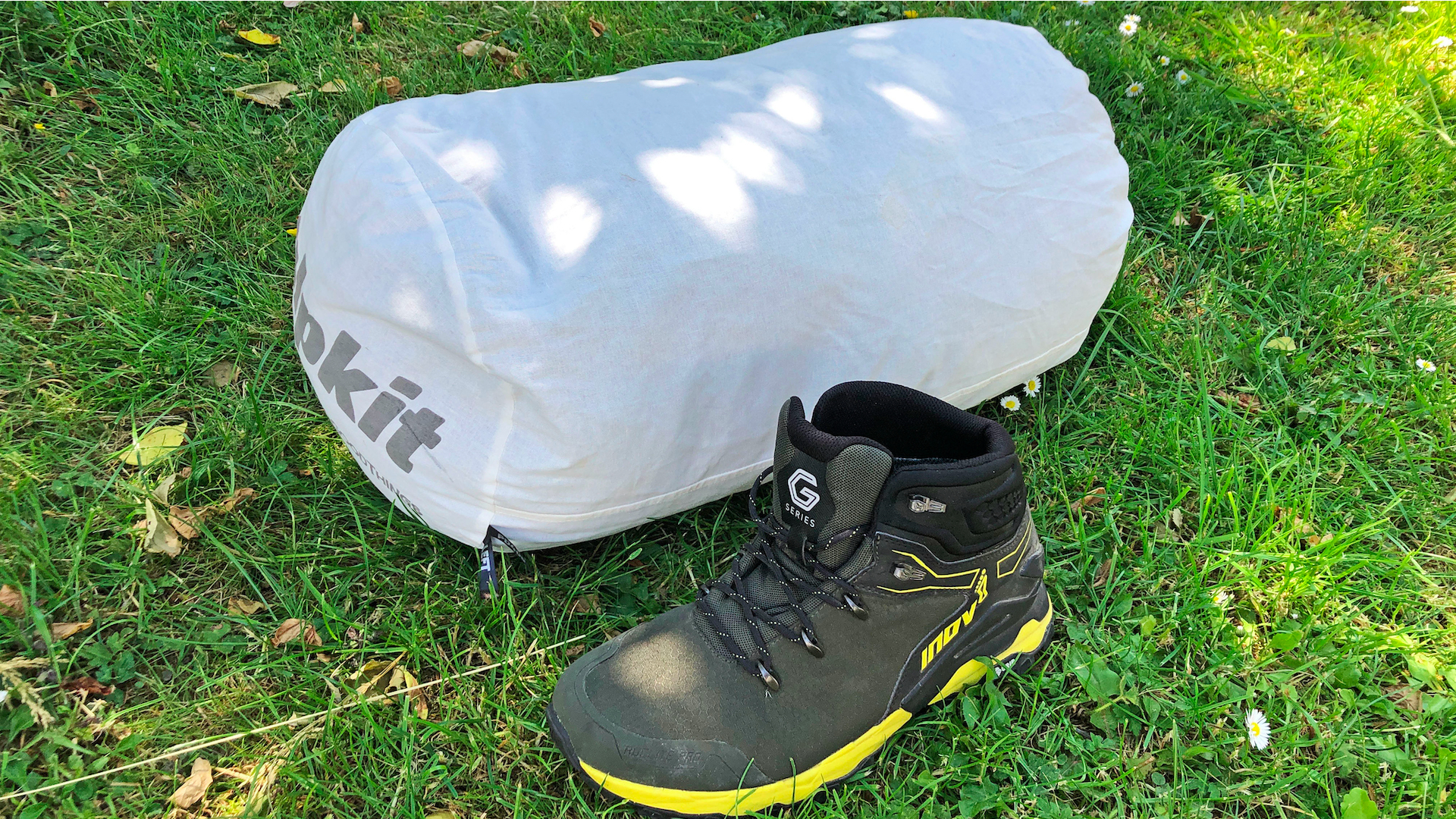
Unsurprisingly, evenings out on the trails in the Highlands of Scotland at the end of October were cold, but twinned with the Alpkit Whisper insulated three-season camping mat and the Alpkit Soloist 3-season tent, the Pipedream 400 kept me warm and comfortable.
Tipping the scales at just 865g, the amazing warmth-for-weight power the Pipedream offers has made it my go-to sleeping bag for backpacking and bikepacking adventures this year, and although I will switch to a lighter and cooler bag for mid summer trips, it won’t be packed away in the cupboard for too long before I’m reaching for it again.
On test, especially during the wee hours of the most unforgiving nights, I really appreciated the Pipedream’s excellent hood, which is easy to adjust and can be pulled in tight around your face on the coldest nights to keep any breezes at bay. The Pipedream also has a sculpted neck baffle that can be worn up under your chin if you’re feeling chilly, or cast aside if you’re warm enough – although, to be honest, this feature felt slightly superfluous to me.
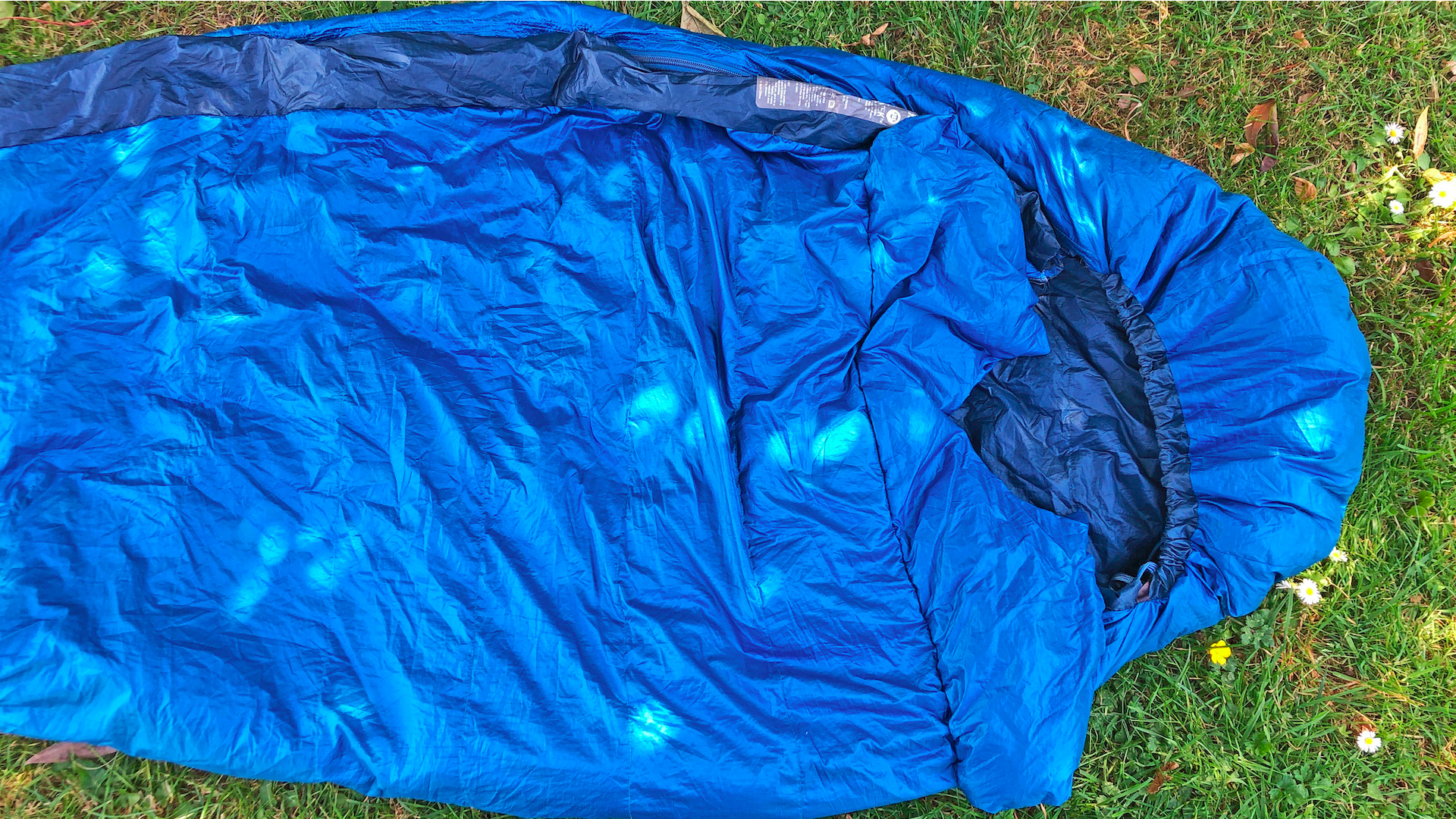
Personally, I found the regular-length bag a bit short, and if you’re over 6ft / 185cm I would definitely recommend going for the long version (although the extra 20cm is quite a large increase). It would be great if Alpkit added a “short” version to the Pipedream 400 family, and made the regular 10cm longer. A women’s-specific version of the bag would be another good idea.
These minor gripes aside, however, I have been super impressed with the design, performance, packability and price of the Alpkit Pipedream 400, and highly recommend it for overnight hikers and backpackers looking for a versatile sleeping bag they can use virtually all year round.

Author of Caving, Canyoning, Coasteering…, a recently released book about all kinds of outdoor adventures around Britain, Pat has spent 20 years pursuing stories involving boots, bikes, boats, beers and bruises. En route he’s canoed Canada’s Yukon River, climbed Mont Blanc and Kilimanjaro, skied and mountain biked through the Norwegian Alps, run an ultra across the roof of Mauritius, and set short-lived records for trail-running Australia’s highest peaks and New Zealand’s Great Walks. He’s authored walking guides to Devon and Dorset, and once wrote a whole book about Toilets for Lonely Planet. Follow Pat’s escapades on Strava here and Instagram here.
